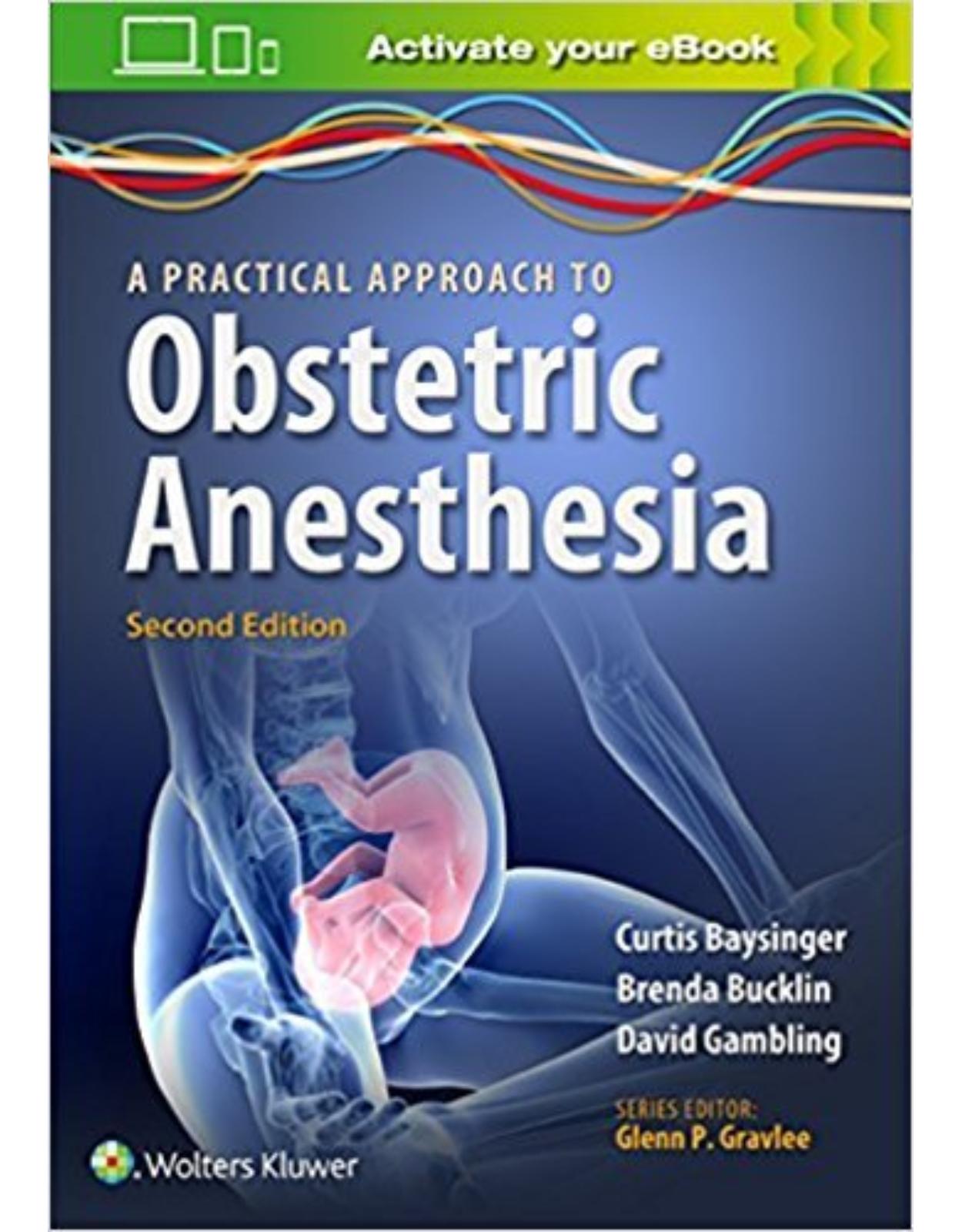
A Practical Approach to Obstetric Anesthesia
Livrare gratis la comenzi peste 500 RON. Pentru celelalte comenzi livrarea este 20 RON.
Disponibilitate: La comanda in aproximativ 4 saptamani
Editura: LWW
Limba: Engleza
Nr. pagini: 576
Coperta: Paperback
Dimensiuni: 178 x 254 x 22 mm
An aparitie: 03 Mar 2016
Description:
Successfully combining the comprehensive depth of a textbook and the user-friendly features of a practical handbook, A Practical Approach to Obstetric Anesthesia, 2nd Edition, is a portable resource for both experienced and novice clinicians. Focusing on clinical issues in obstetric anesthesia, it uses an easy-to-follow outline format for quick reference, enhanced with numerous tables, figures, and photographs. The use of color in this edition highlights key information and improves readability for daily practice and study.Key Features:•Presents the most up-to-date information available in obstetric anesthesiology, including guidance on both routine and complicated patient care.•Features new chapters on ultrasound and echocardiographic techniques, trauma, management of the opioid dependent parturient, and maternal morbidity and mortality.•Covers pharmacology and physiology, antepartum considerations, labor and delivery, postpartum issues, and disease states in obstetric patients, including a chapter on obesity and pregnancy, as well as guidelines from national organizations.•Provides Clinical Pearls throughout, as well as Key Points in each chapter and current references for further study.Now with the print edition, enjoy the bundled interactive eBook edition, which can be downloaded to your tablet and smartphone or accessed online and includes features like:•Complete content with enhanced navigation•Powerful search tools and smart navigation cross-links that pull results from content in the book, your notes, and even the web•Cross-linked pages, references, and more for easy navigation•Highlighting tool for easier reference of key content throughout the text•Ability to take and share notes with friends and colleagues•Quick reference tabbing to save your favorite content for future use
Table of Contents:
Section I: Pharmacology and Physiology
Chapter 1: Physiologic Changes of Pregnancy
Chapter 1 Introduction
I. Cardiovascular system
Table 1.1: Changes in blood volume and its consequences during pregnancy
Table 1.2: Hemodynamic changes during pregnancy compared to nonpregnant women
II. Respiratory system
Table 1.3: Blood gases during pregnancy
Table 1.4: Changes in respiratory physiology at term compared to nonpregnant women
Table 1.5: Causes of increased oxygen consumption during pregnancy
III. Hematologic system
Table 1.6: Hematologic changes of normal pregnancy
IV. Gastrointestinal system
V. Hepatic function
Table 1.7: Liver function tests in normal pregnancy
VI. Renal system
VII. Endocrine system
VIII. Musculoskeletal
IX. Central nervous system
X. Anesthetic implications of maternal physiologic changes during pregnancy
References
Chapter 2: Uteroplacental Anatomy, Blood Flow, Respiratory Gas Exchange, Drug Transfer, and Teratogenicity
Chapter 2 Introduction
I. Anatomy
Figure 2.1
II. Uteroplacental circulation
Figure 2.2
III. Respiratory gas exchange (see fig. 2.2)
Figure 2.3
Figure 2.4
IV. Nutrient/drug transfer
Table 2.1: Placental drug transfer
V. Teratogenicity
Table 2.2: U.S. Food and Drug Administration requirements for pregnancy and lactation labeling of prescription drugs and biological products
Table 2.3: Congenital malformations associated with drugs commonly administered during pregnancy
References
Chapter 3: Local Anesthetics and Toxicity
Chapter 3 Introduction
I. Chemical structure
Figure 3.1
Table 3.1: Commonly used local anesthetics and attendant physiochemical properties
II. Mechanism of action
III. Differential blockade
Table 3.2: Peripheral nerve fiber classification
IV. Additives
V. Effect of pregnancy on local anesthetic action
VI. Pharmacokinetics
VII. Local anesthetics rapidly cross the placenta
VIII. Systemic toxicity
Table 3.3: Early and late signs of local anesthetic toxicity
Table 3.4: Maximum recommended single doses of local anesthetics
Figure 3.2
IX. Other types of reactions may occur
Acknowledgment
References
Chapter 4: Obstetric Medications
Chapter 4 Introduction
I. Tocolytic medications
Figure 4.1
Table 4.1: β-Adrenergic receptor effects
Table 4.2: Effects of increasing plasma magnesium levels
II. Uterotonic medications
Figure 4.2
References
Section Ii: Antepartum Considerations
Chapter 5: Ethical and Legal Considerations in Obstetric Anesthesia
Chapter 5 Introduction
I. Introduction to ethics
II. Informed consent
III. Other consent issues
IV. Professional negligence: the law
V. Informed consent: the law
VI. Litigation specific to obstetric anesthesia
VII. Disclosure and apology
VIII. Maternal autonomy and fetal beneficence
Summary
References
Chapter 6: Nonobstetric Surgery during Pregnancy
Chapter 6 Introduction
I. Incidence and anesthetic concerns specific to pregnancy
II. Teratogenicity of anesthetic agents
Table 6.1: Documented teratogens
III. Preoperative plan and counseling
Table 6.2: Principles for anesthetic management of the parturient
Table 6.3: Principles for anesthetic management of the parturient >24 weeks’ gestation
IV. Intraoperative anesthetic management
V. Postoperative care
VI. Special situations
Summary
Table 6.4: Common fetal interventions
References
Section Iii: Labor and Delivery
Chapter 7: Fetal Assessment and Monitoring
Chapter 7 Introduction
I. Physiologic basis of fetal monitoring
II. Electronic fetal monitoring
III. Interpretation of electronic fetal monitoring
IV. Antepartum fetal monitoring
Table 7.1: Conditions associated with increased risk of perinatal morbidity due to fetal asphyxia in which antepartum fetal surveillance may be of benefit
Table 7.2: Biophysical profile
V. Intrapartum fetal surveillance
Figure 7.1
Figure 7.2
Figure 7.3
Figure 7.4
Table 7.3: Classification of decelerations
Figure 7.5
Figure 7.6
Figure 7.7
Figure 7.8
Figure 7.9
Table 7.4: Three-tier interpretation system of fetal heart rate patterns
Table 7.5: Interventional maneuvers for nonreassuring fetal heart rate patterns
VI. Medication and anesthetic effects on fetal surveillance
Table 7.6: Special circumstances
References
Chapter 8: Maternal Infection and Fever
Chapter 8 Introduction
I. Fever in pregnancy
II. Noninfectious fever in parturients
III. Infectious causes of fever in parturients
IV. Sepsis and septic shock
Table 8.1: Treatment of septic shock (surviving sepsis guidelines)
V. Neuraxial anesthesia for the febrile parturient
References
Chapter 9: Non-neuraxial Analgesic Techniques
Chapter 9 Introduction
I. Nonpharmacologic methods of pain relief in labor
Figure 9.1
Figure 9.2
Figure 9.3
II. Non-neuraxial pharmacologic methods of pain relief
Summary
Table 9.1: Suggested technique for intermittent inhalation of oxygen/nitrous oxide mixtures
Figure 9.4: Patient-controlled analgesia (PCA) with remifentanil for labor.
Table 9.2: Remifentanil studies for labor analgesia
Table 9.3: Maternal and neonatal effects of remifentanil
References
Chapter 10: Choice of Neuraxial Analgesia and Local Anesthetics
Chapter 10 Introduction
I. Pain pathways during labor
Figure 10.1
II. Neuraxial anatomy in pregnancy
Figure 10.2
III. Techniques for neuraxial analgesia during labor
Table 10.1: Contraindications for neuraxial techniques during labor
Table 10.2: Preprocedure checklist
Table 10.3: Suggested epidural technique
Table 10.4: Important components of aseptic technique before neuraxial anesthetic placement
Figure 10.3
Figure 10.4
Figure 10.5
Table 10.5: Dose ranges of commonly used opioids
Table 10.6: Suggested patient-controlled epidural analgesia regimens
Table 10.7: Suggested guidelines for ambulation during neuraxial analgesia
IV. Side effects and complications
References
Chapter 11: Ultrasound and Echocardiographic Techniques in Obstetric Anesthesia
Chapter 11 Introduction
I. Introduction
Table 11.1: Scanning equipment requirements
II. Focused cardiac ultrasound
Figure 11.1
Figure 11.2
Table 11.2: Sensitivity and specificity for predicting a right atrial pressure ≥10 mm Hg versus vena cava inspiratory constriction
Figure 11.3
III. Pulmonary ultrasound
Figure 11.4
Figure 11.5
Table 11.3: Sensitivity and specificity of auscultation, chest radiography, and lung ultrasonography for diagnosing lung disorders
IV. Ultrasound-guided neuraxial anesthesia
Figure 11.6
Figure 11.7
Figure 11.8
Figure 11.9
Figure 11.10
Figure 11.11
Figure 11.12
Table 11.4: Operator outcomes ultrasound- versus non–ultrasound-guided epidural analgesia
Figure 11.13
V. Ultrasound-guided regional anesthesia (transversus abdominis plane block)
Figure 11.14
VI. Intracranial pressure measurement (optic nerve sheath diameter)
Figure 11.15
Figure 11.16
VII. Gastric volume measurement
Figure 11.17
Figure 11.18
Figure 11.19
VIII. Pelvic/abdominal ultrasound
Figure 11.20
IX. Airway examination
Figure 11.21
X. Lower extremity vein ultrasound
Figure 11.22
References
Chapter 12: Impact of Neuraxial Analgesia on Obstetric Outcomes
Chapter 12 Introduction
I. Introduction
Table 12.1: Benefits of neuraxial labor analgesia
II. Effects of neuraxial analgesia on the progress of labor
III. Duration of the first stage of labor
IV. Duration of the second stage of labor
Table 12.2: Definitions of second stage arrest
V. Instrumental vaginal delivery
VI. Cesarean delivery
VII. Influence of oxytocin augmentation and ambulation on labor outcomes
VIII. Impact of neuraxial analgesia on maternal fever rates (see chapter 8, maternal infection and fever)
IX. Impact of neuraxial analgesia on breastfeeding success rates
X. Conclusion
References
Chapter 13: Anesthetic Considerations for Women Receiving Cesarean Delivery
Chapter 13 Introduction
I. Background
II. Indications for cesarean delivery
Table 13.1: Indications for cesarean delivery
III. Surgical considerations
IV. Complications of cesarean delivery
Table 13.2: Recommended resources for the management of obstetric hemorrhage: the American Society of Anesthesiologists Practice Guidelines for Obstetric Anesthesia
Figure 13.1
V. Preoperative considerations
VI. Anesthetic techniques
Table 13.3: Classifications of fetal heart rate
Table 13.4: Contraindications to epidural or spinal anesthesia
Figure 13.2
VII. Postoperative management (see Chapter 18, Postcesarean Analgesia)
VIII. Conclusions
References
Chapter 14: Difficult Airway Management in the Pregnant Patient
Chapter 14 Introduction
I. Introduction
II. Definitions
III. Goals and preparation for airway management during pregnancy
IV. Incidence of difficult and failed intubation
Table 14.1: Difficult airway incidence
V. Anesthesia-related morbidity and mortality
Table 14.2: NAP4 study: the common recurring themes resulting in adverse outcomes
VI. Maternal deaths and airway-related issues following emergence
VII. Anatomic and physiologic changes during pregnancy contributing in difficult airway management
Figure 14.1
VIII. Airway assessment
Figure 14.2
Figure 14.3
Figure 14.4
Figure 14.5
Table 14.3: LEMON: airway assessment method
Figure 14.6
IX. Morbid obesity in pregnancy and the airway
Figure 14.7
X. Aspiration of gastric contents
XI. Anesthetic management in obstetric patients with a predicted difficult airway
XII. Management of pregnant patient with an unanticipated difficult airway
Figure 14.8
Figure 14.9
Table 14.4: Difficult airway cart
XIII. Extubation and postanesthesia care unit airway issues
XIV. Conclusion
References
Chapter 15: Anesthesia for Multiple Gestation and Breech Presentation
Chapter 15 Introduction
Anesthesia for multiple gestation: I. Introduction
Figure 15.1
II. National guidelines
III. Maternal adaptation to multiple gestation pregnancy
Table 15.1: Exaggerated physiologic changes in multiple gestation pregnancy
IV. Obstetric conditions and concerns for multiple gestation pregnancy
Table 15.2: Complications of multiple gestation pregnancy
V. Timing of delivery for multiple gestation pregnancy
VI. Preterm birth in multiple gestation pregnancy
VII. Delivery route for multiple gestation pregnancy
VIII. Anesthesia for vaginal delivery in multiple gestation pregnancy
IX. Anesthesia for cesarean delivery in multiple gestation pregnancy
X. Pharmacologic therapies for multiple gestation pregnancy
XI. Costs of multiple gestation pregnancy
Anesthesia For breech presentation: I. Introduction
II. American college of obstetricians and gynecologists committee opinion 2006: breech presentation management69
III. Historical perspective for breech presentation management
IV. Demographics for breech presentation
Figure 15.2
Table 15.3: Risk factors for breech presentation
V. Obstetric management for breech presentation
Table 15.4: Indications for breech cesarean delivery in singleton pregnancy
VI. Complications of vaginal breech delivery (see table 15.5)
Table 15.5: Problems associated with persistent breech presentation
VII. Cesarean delivery for breech presentation
VIII. External cephalic version for breech presentation
Table 15.6: Factors associated with external cephalic version failure
IX. Labor following external cephalic version
X. Anesthesia for external cephalic version in breech presentation
XI. Costs for external cephalic version
XII. Neonatal resuscitation in breech presentation delivery
References
Chapter 16: Obstetric Emergencies
Chapter 16 Introduction
I. Nonreassuring fetal status
Table 16.1: Basic causes of fetal compromise in the peripartum period
Table 16.2: Obstetric management of nonreassuring fetal status
II. Peripartum bleeding
Table 16.3: Clinical signs of hemorrhagic shock in pregnancy
Table 16.4: Transfusion-related risks
Figure 16.1
Table 16.5: Laboratory diagnosis of disseminated intravascular coagulation
Table 16.6: Number of prior cesarean deliveries and risk of placenta accreta in patients with placenta previa
Figure 16.2
Table 16.7: Complications of arterial embolization procedures
III. Intrapartum emergencies
Table 16.8: Differential diagnosis: amniotic fluid embolus
References
Chapter 17: Newborn Resuscitation
Chapter 17 Introduction
I. Neonatal adaptations to extrauterine life
Figure 17.1
Figure 17.2
II. Anticipating the depressed newborn
Table 17.1: Antepartum factors associated with need for neonatal resuscitation
Table 17.2: Intrapartum factors and events associated with need for neonatal resuscitation
Table 17.3: Categorization of fetal heart rate tracing
III. Evaluating the neonate
Table 17.4: Apgar scoring system
Table 17.5: Normal umbilical arterial and venous blood gas values
IV. Resuscitation of the neonate
Table 17.6: Essential supplies for neonatal resuscitation
Figure 17.3
Figure 17.4
Table 17.7: Recommendation of endotracheal tube (ETT) size
Figure 17.5
Table 17.8: Medications for neonatal resuscitation
V. Special resuscitation circumstances
Figure 17.6
References
Section Iv: Postpartum Issues
Chapter 18: Postcesarean Analgesia
Chapter 18 Introduction
I. Introduction
II. Multimodal therapy
III. Medications: oral, systemic, neuraxial, and regional administration
Table 18.1: Recommended intravenous patient-controlled analgesia (IV PCA) opioid doses for postcesarean analgesia
Table 18.2: Recommended single doses of epidural opioids for postcesarean analgesiaa
Table 18.3: Recommended single doses of intrathecal opioids for postcesarean analgesiaa
Table 18.4: Prophylaxis and treatment of nausea and vomiting
IV. Summary
References
Chapter 19: Management of Postdural Puncture Headache
Chapter 19 Introduction
I. Scope of the problem
II. Pathophysiology
III. Risk factors for postdural puncture headache
IV. Diagnosis of postdural puncture headache
V. Differential diagnosis of postpartum headache
Table 19.1: Differential diagnosis of postpartum headache
VI. Prevention and treatment of postdural puncture headache after accidental dural puncture
VII. Recommendations
Summary
Recommended Reading
References
Chapter 20: Neurologic Deficits Following Labor and Delivery
Chapter 20 Introduction
I. Neurologic injury
Table 20.1: Frequency of immediate serious complications occurring in 145,550 epidurals given for obstetric analgesia or anesthesia
Table 20.2: Frequency of transient and permanent neurologic deficits in neuraxial anesthesia
Figure 20.1
II. History and initial evaluation
III. Basic anatomy
Figure 20.2
IV. Common obstetric neuropathies
Table 20.3: Peripheral nerve injuries in obstetric patients
Table 20.4: Obstetric nerve injury and implications
Figure 20.3
Figure 20.4
V. Ischemic injury to the spinal cord
Figure 20.5
VI. Types of lesions
VII. Diagnosis and treatment of neuropathies (see fig.20.5 and table 20.5)
Table 20.5: Electromyography and evoked potential after nerve injury
Figure 20.6
VIII. Approach to patients with peripheral nerve injuries
Table 20.6: Differential diagnosis of prolonged neural blockade
IX. Complications related to spinal fluid leakage
Figure 20.7
Figure 20.8
Figure 20.9
Figure 20.10
X. Infectious complications of neuraxial blocks
Figure 20.11
XI. Epidural hematoma
Table 20.7: Summary of guidelines for neuraxial anesthesia with anticoagulation therapy
XII. Recommendations
References
Chapter 21: Postpartum Tubal Ligation
Chapter 21 Introduction
I. American society of anesthesiologists practice guidelines for obstetric anesthesia: recommendations for postpartum sterilization
Table 21.1: Summary of American Society of Anesthesiologists Practice Guidelines for Obstetric Anesthesia: postpartum sterilization
II. Postpartum anatomic and physiologic changes
III. Timing of postpartum tubal sterilization
Table 21.2: Factors affecting timing of tubal sterilization
IV. Surgical considerations relevant to the anesthesiologist
Figure 21.1
Figure 21.2
V. Anesthetic considerations
Table 21.3: Factors to consider when attempting epidural reactivation
Figure 21.3
References
Section V: Disease States
Chapter 22: Hypertensive Disorders of Pregnancy
Chapter 22 Introduction
I. Differential diagnosis and definitions
Table 22.1: Signs and symptoms of preeclampsia
II. Epidemiology
III. Risk factors (see table 22.2)
Table 22.2: Risk factors for development of preeclampsia
IV. Etiology
V. Pathophysiology
Table 22.3: Signs and symptoms of preeclampsia
VI. Obstetric management
Table 22.4: Effects of magnesium at different plasma levels
Table 22.5: Useful antihypertensive agents in pregnancy
VII. Anesthetic considerations
VIII. Mode of delivery and anesthetic technique
Figure 22.1
IX. Postpartum care
References
Chapter 23: Endocrine Disorders
Chapter 23 Introduction
I. Diabetes mellitus
Table 23.1: Insulin and insulin analogs
II. Thyroid disorders
Table 23.2: Changes in thyroid function test results in normal pregnancy and in thyroid disease states
Table 23.3: Causes of hyperthyroidism in pregnancy
Table 23.4: Drugs and their mechanism for treatment of hyperthyroidism
III. Pituitary disorders
Table 23.5: Causes of hypopituitarism in the pregnant woman
IV. Adrenal disorders
V. Conclusion
References
Chapter 24: Thrombophilias/Coagulopathies
Chapter 24 Introduction
I. Overview of normal hemostatic coagulation
Figure 24.1
Figure 24.2
Figure 24.3
Figure 24.4
Figure 24.5
II. Physiologic changes of coagulation in pregnancy
Table 24.1: Summary of hemostatic changes at term pregnancy
III. Measurements of coagulation in pregnancy
Figure 24.6
IV. Thrombophilia
Table 24.2: Risk of venous thromboembolism with different thrombophilias in pregnancy
Table 24.3: Recommended thromboprophylaxis for parturient with inherited thrombophilia
Table 24.4: Different recommended anticoagulation regimes
Table 24.5: Guidelines for timing of neuraxial anesthesia in the anticoagulated patient
V. Disorders of coagulation
Summary
Table 24.6: Comparison of different anticoagulants used in pregnancy
Table 24.7: Anesthetic management of parturients with inherited bleeding disorders
Table 24.8: Precipitants of disseminated intravascular coagulation in pregnancy
References
Chapter 25: Cardiac Disease in the Obstetric Patient
Chapter 25 Introduction
I. Overview
Table 25.1: New York Heart Association classification of cardiovascular disease
Table 25.2: Modified World Health Organization classification with corresponding maternal cardiac risk
Figure 25.1
II. Valvular heart disease: congenital and acquired
Figure 25.2
Figure 25.3
Figure 25.4
Figure 25.5
Table 25.3: Factors affecting pulmonary vascular resistance (PVR)
III. Congenital heart disease in the adult parturient
Table 25.4: Tachyarrhythmias associated with adult congenital heart disease
Figure 25.6
Figure 25.7
Figure 25.8
Figure 25.9
IV. Primary pulmonary hypertension
Figure 25.10
V. Cardiomyopathy
Figure 25.11
Figure 25.12
Figure 25.13
VI. Ischemic heart disease in pregnancy
VII. Cardiac dysrhythmias and pregnancy
Figure 25.14
VIII. Cardiopulmonary resuscitation in the obstetric patient
References
Chapter 26: Neurologic and Neuromuscular Disease
Chapter 26 Introduction
I. Anatomic disease
Figure 26.1
Figure 26.2
Table 26.1: Idiopathic causes of structural scoliotic curves
Table 26.2: Contributors to clinical deterioration in pregnant patients with uncorrected scoliosis and curves >25 degrees
Table 26.3: Possible complications associated with epidural catheter placement in patients with scoliosis and instrumentation
Figure 26.3
Table 26.4: Signs and symptoms of autonomic hyperreflexia
Table 26.5: Signs and symptoms of an intracranial neoplasm
II. Vascular disease
III. Immunologic disease
Table 26.6: Medications known to exacerbate myasthenic symptoms
IV. Epilepsy
Table 26.7: Classification of seizures
V. Conclusion
References
Chapter 27: Renal and Hepatic Disease in the Pregnant Patient
Chapter 27 Introduction
I. Introduction
II. Renal disease during pregnancy
Table 27.1: Renal changes during pregnancy
Table 27.2: Renal disease outcome: quality initiative classification of renal disease
Table 27.3: Systemic effects of uremia
Table 27.4: Monitoring of renal disease during pregnancy
Table 27.5: Signs and symptoms of acute renal decompensation
Table 27.6: Systemic effects of chronic renal disease
I. Renal failure associated with pregnancy
Table 27.7: Etiology and laboratory findings of acute kidney injury
Table 27.8: Causes of acute kidney injury in pregnancy
III. Liver disease
Table 27.9: Characteristics of liver disease in pregnancy
Table 27.10: Causes of acute hepatic failure in obstetric patients
Table 27.11: Modified Swansea criteria for diagnosis of acute fatty liver of pregnancy
Table 27.12: Signs and symptoms of hemolysis, elevated liver enzymes, low platelets
References
Chapter 28: Obstetric Anesthesia for Parturients with Respiratory Diseases
Chapter 28 Introduction
I. Introduction
Figure 28.1
Table 28.1: Respiratory alterations during pregnancy
II. Asthma
Table 28.2: Classification of asthma severity
Figure 28.2
Figure 28.3
Figure 28.4
III. Pulmonary embolism during pregnancy
Figure 28.5
IV. Amniotic fluid embolism
Table 28.3: Common amniotic fluid embolism symptoms
V. Venous air embolism
Figure 28.6
VI. Smoking
Table 28.4: Smoking effects
VII. Obstructive sleep apnea
VIII. Sarcoidosis
IX. Aspiration pneumonitis
X. Cystic fibrosis
XI. Lung transplantation
XII. Restrictive lung disease
XIII. Acute respiratory distress syndrome and respiratory failure
Summary
Table 28.5: Causes of acute respiratory distress syndrome in pregnancy
References
Chapter 29: Obesity and Pregnancy
Chapter 29 Introduction
I. High-risk patient
Figure 29.1
Table 29.1: Maternal comorbidities
Table 29.2: Obstetric risk and outcomes that are increased compared to nonobese pregnancies
II. Obesity: definition and demographics
Table 29.3: Classification of obesity using body mass index (BMI)
III. Physiologic changes of obesity and pregnancy
Table 29.4: Signs and symptoms of sleep apnea in the pregnant patient
IV. Anesthesia for the obese pregnant woman
V. Implications for patients undergoing labor for vaginal delivery
Figure 29.2
VI. Implications for patients undergoing cesarean delivery
Figure 29.3
Figure 29.4
VII. Postoperative care
VIII. Newborn
IX. Pregnancy after bariatric surgery
X. Cost
SUMMARY
References
Chapter 30: Trauma in the Obstetric Patient
Chapter 30 Introduction
I. Introduction
II. Epidemiology of trauma
III. General treatment guidelines
Figure 30.1
IV. Limitations in assessing severity of maternal injury
V. Principles of radiologic assessment
VI. Clinical and test findings versus pregnancy outcome
VII. Anesthetic considerations
VIII. Specific mechanisms of injury
IX. Salvage therapies
Summary
References
Chapter 31: Management of the Opioid Dependent Parturient
Chapter 31 Introduction
I. Introduction
Figure 31.1
Figure 31.2
II. Obstetric management (see Fig. 31.3)
Figure 31.3
III. Neonatal abstinence syndrome
IV. Pain management during the peripartum period (see Fig. 31.3)
Summary
Table 31.1: Summary of studies reporting peripartum pain or anesthetic management of the opioid-dependent parturient
References
Chapter 32: Maternal Morbidity and Mortality
Chapter 32 Introduction
I. Maternal mortality
Figure 32.1
Figure 32.2
II. Severe maternal morbidity
III. Prevention and lessons learned
IV. Anesthesia-related maternal mortality
Table 32.1: Pregnancy-related mortality ratio due to anesthesia in the United States and United Kingdom, 1979–2002, and United Kingdom, 2003–2011
Table 32.2: Case fatality rates and rate ratios of anesthesia-related deaths during cesarean delivery by type of anesthesia in the United States, 1979–2002
Table 32.3: Complications of general and neuraxial anesthesia
References
Section Vi: Guidelines from National Organizations
Chapter 33: Guidelines from National Organizations
Chapter 33 Introduction
I. Terms used to label guidance documents
II. American Society of Anesthesiologists as a leader in developing guidance documents
III. “Practice Parameter” is the American Society of Anesthesiologists term for guidance documents
IV. How should Practice Parameters be used?
V. Limitations of guidance documents
VI. How to judge/compare documents
VII. National organizations with guidance relevant to obstetric anesthesia
VIII. American society of anesthesiologists website access and relevant documents
Table 33.1: American Society of Anesthesiologists documents specific to obstetric anesthesia practice and last updates (if noted)
Table 33.2: Suggested resources for obstetric hemorrhagic emergencies
Table 33.3: Suggested resources for airway management during initial provision of neuraxial analgesia
Table 33.4: Suggested contents of a portable storage unit for difficult airway management for cesarean delivery rooms
IX. American College of Obstetricians and Gynecologists
Table 33.5: American College of Obstetricians and Gynecologists documents relevant to obstetric anesthesia
X. American Academy of Pediatrics and American College of Obstetricians and Gynecologists Collaboration: Guidelines for Perinatal Care, Seventh Edition, 201213
XI. Relevant documents from the American Society of Regional Anesthesia and Pain Medicine ASRA official website: www.ASRA.com (see Table 33.6)
Table 33.6: Documents from other relevant organizations
XII. Relevant document from the American Heart Association (see Table 33.6)
XIII. Relevant document from the Society of Obstetric Anesthesia and Perinatology (see Table 33.6)
References
Appendix
Remarks
Glossary
| An aparitie | 03 Mar 2016 |
| Autor | Dr. Brenda A. Bucklin MD, Curtis L. Baysinger MD, David Gambling MD |
| Dimensiuni | 178 x 254 x 22 mm |
| Editura | LWW |
| Format | Paperback |
| ISBN | 9781469882864 |
| Limba | Engleza |
| Nr pag | 576 |
-
52400 lei 46500 lei
-
63600 lei 62200 lei

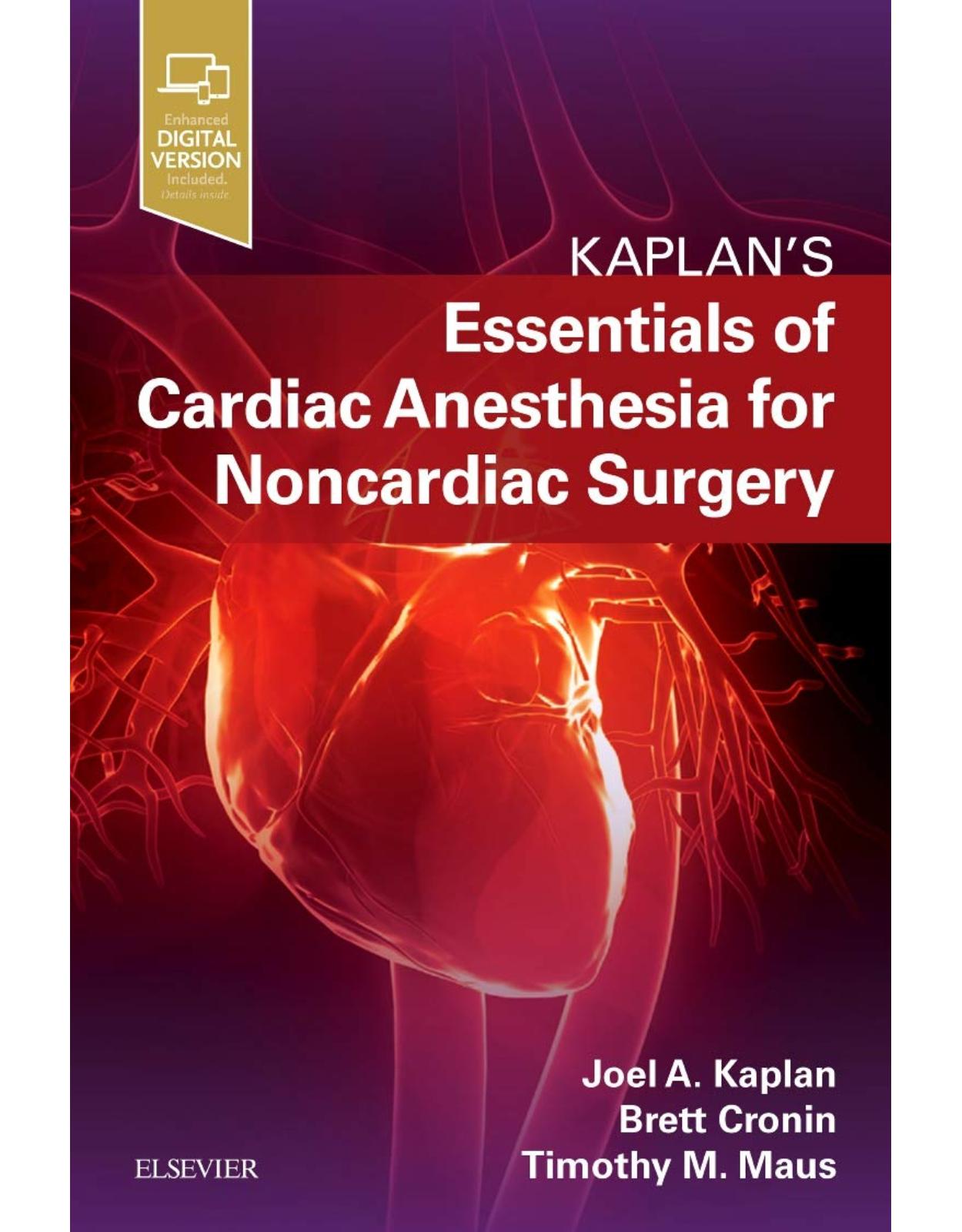
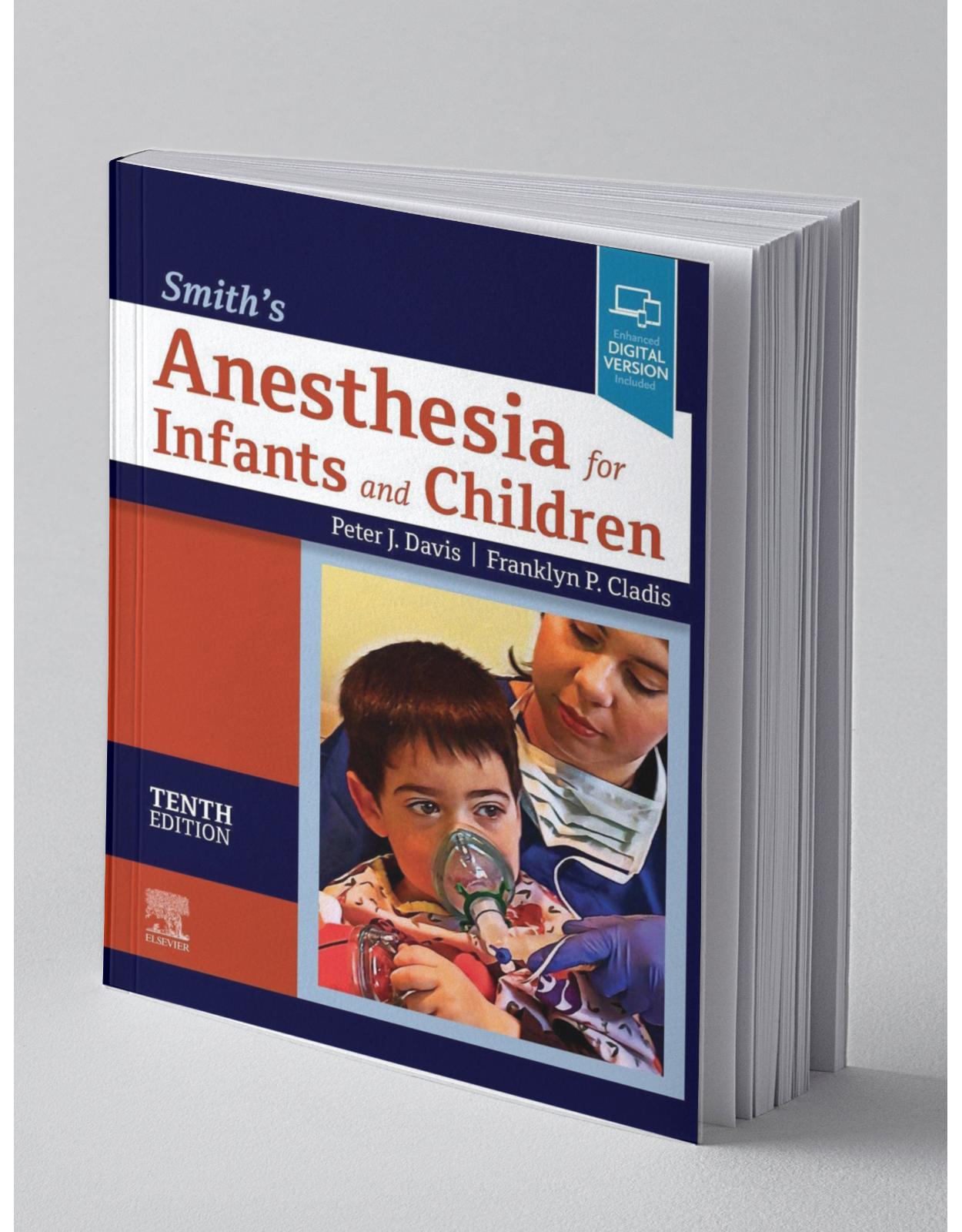

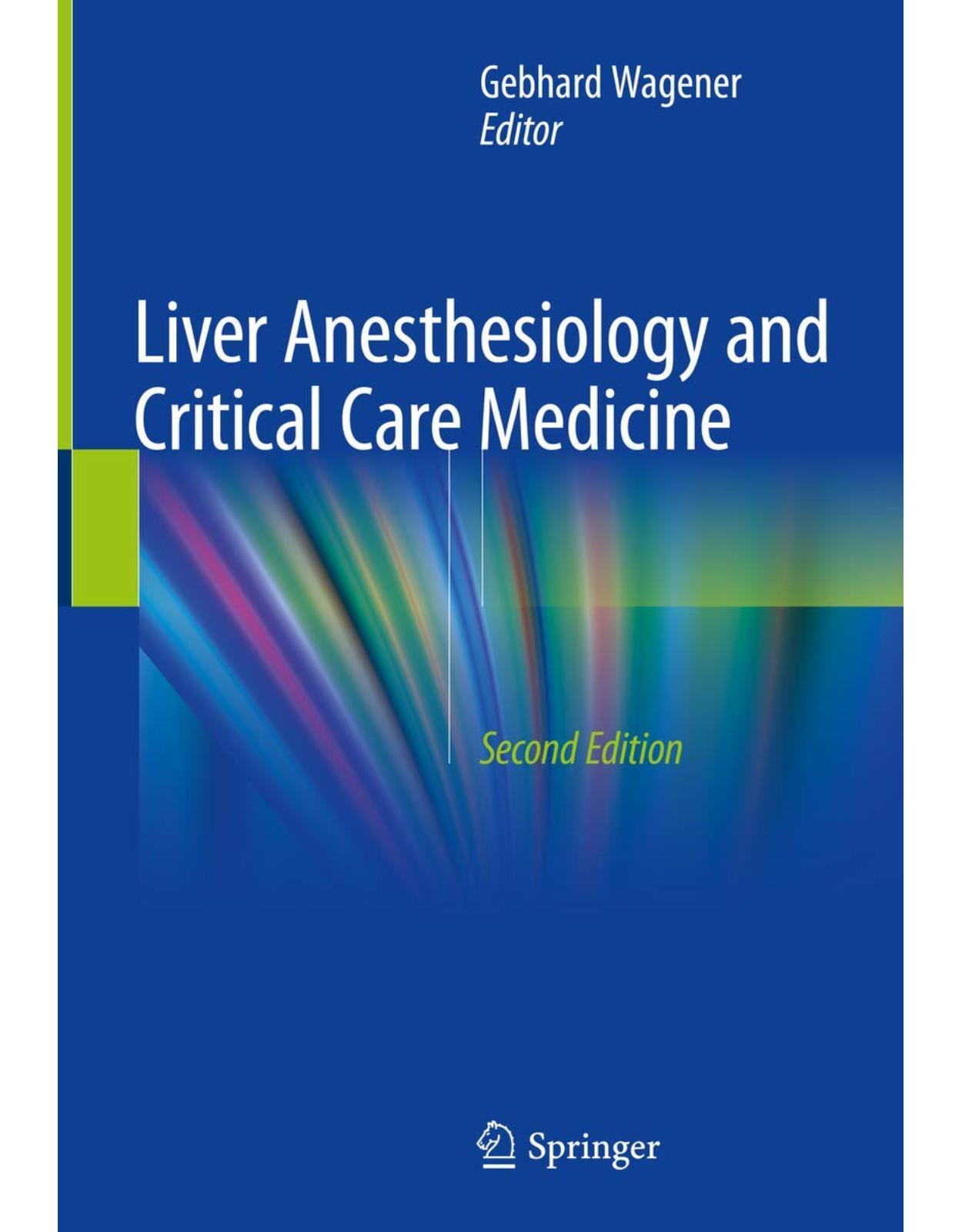
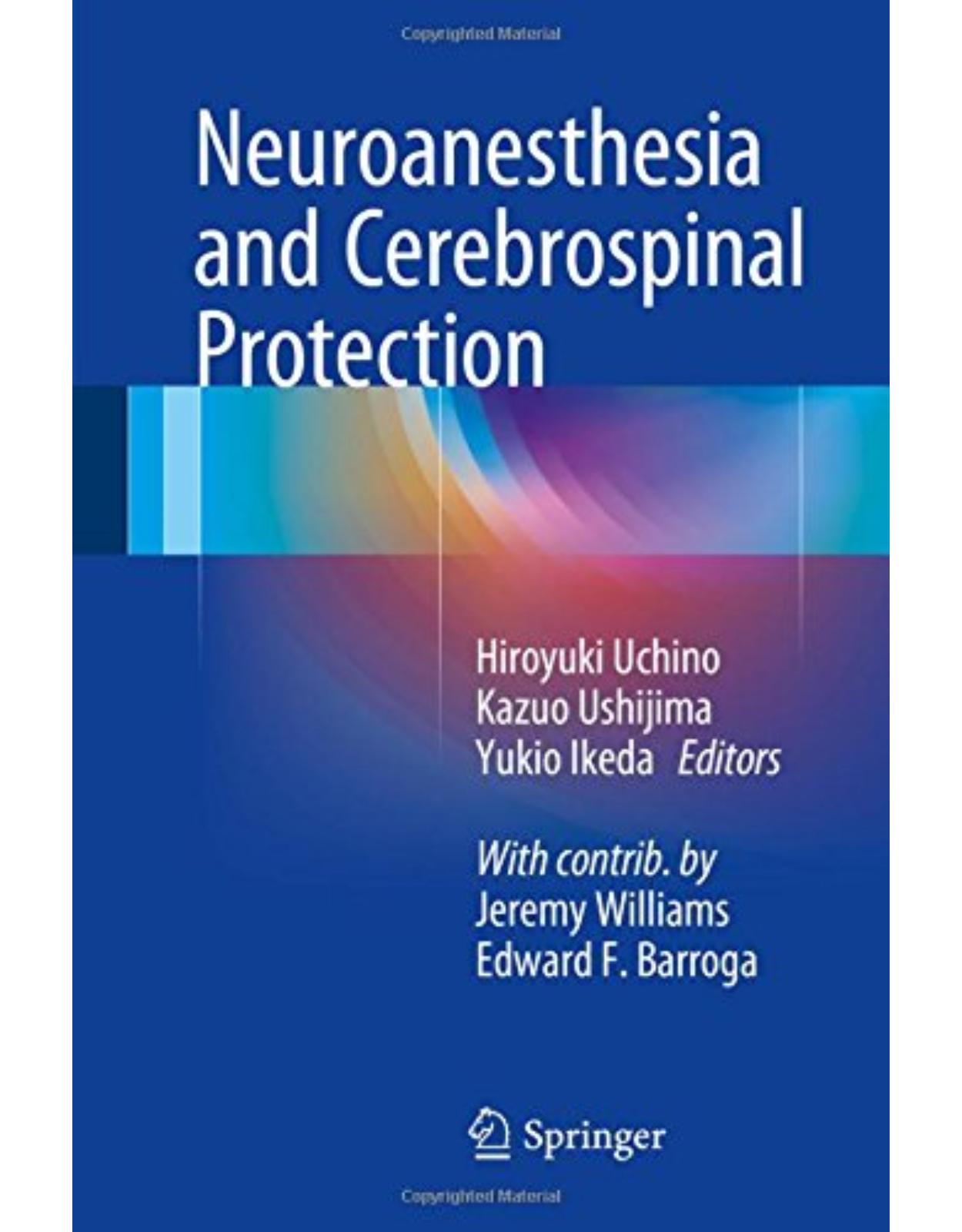
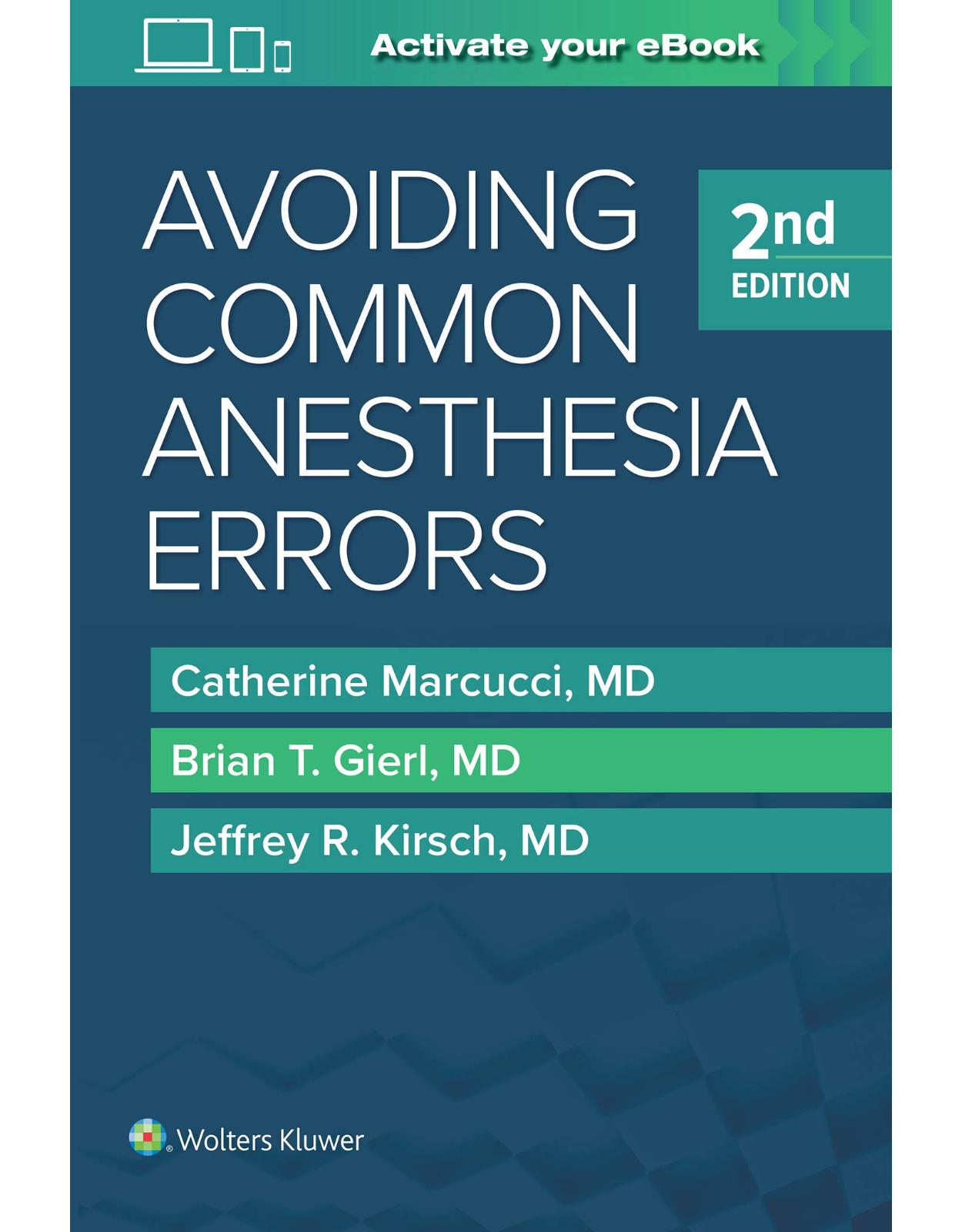
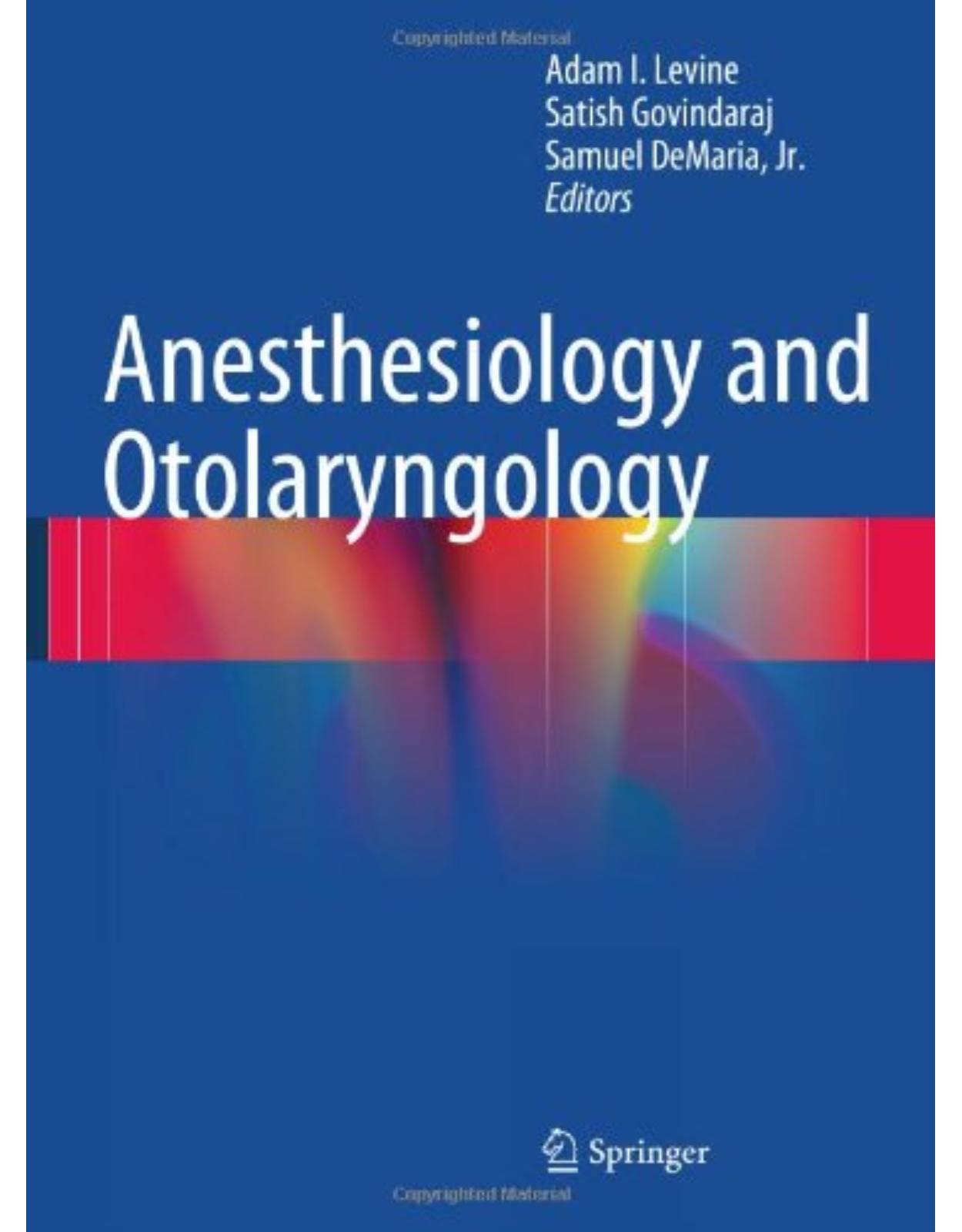

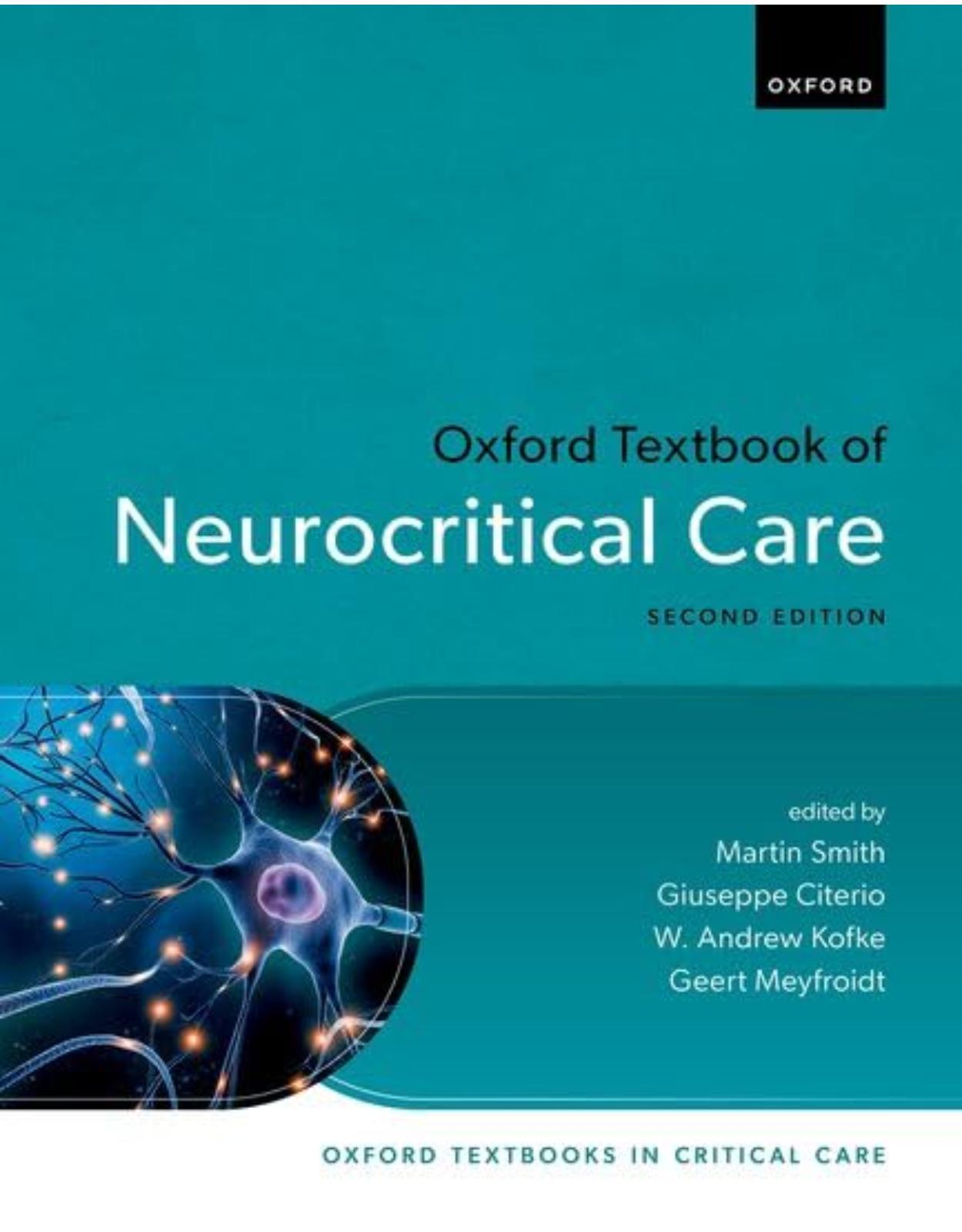
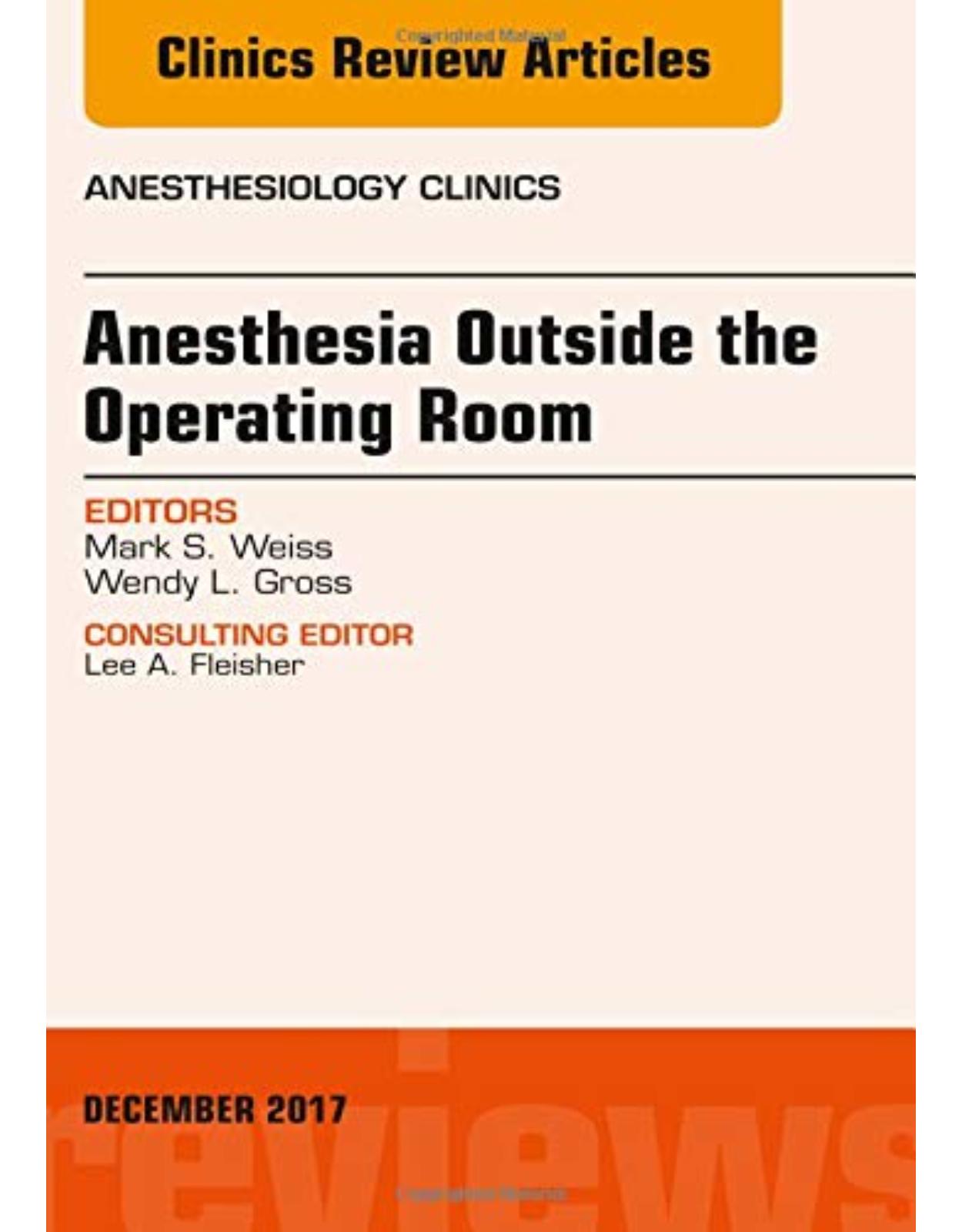

Clientii ebookshop.ro nu au adaugat inca opinii pentru acest produs. Fii primul care adauga o parere, folosind formularul de mai jos.